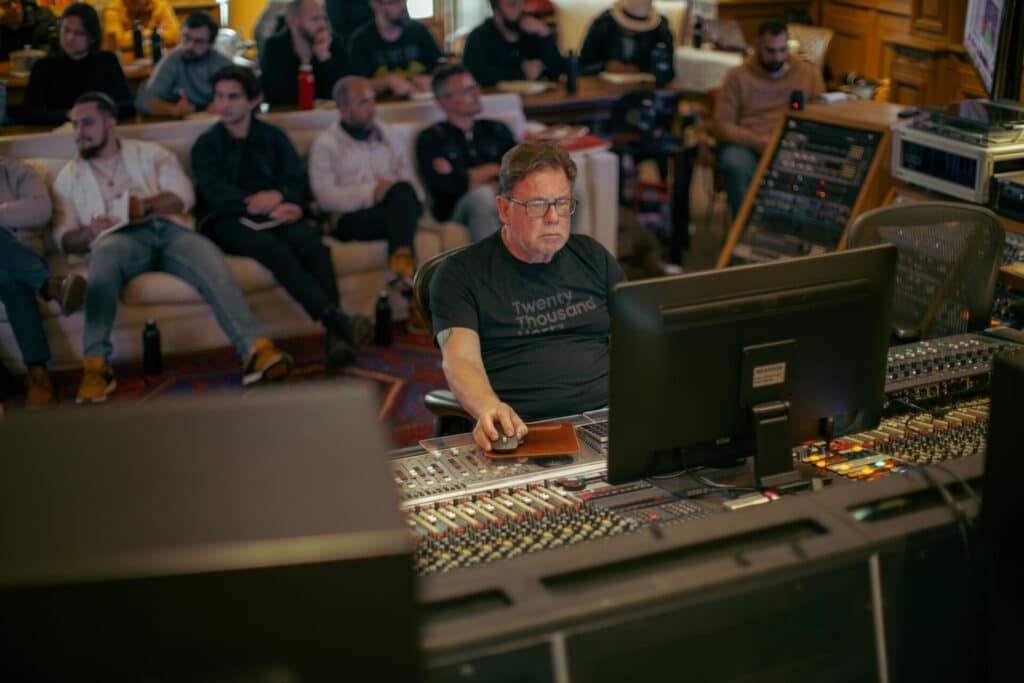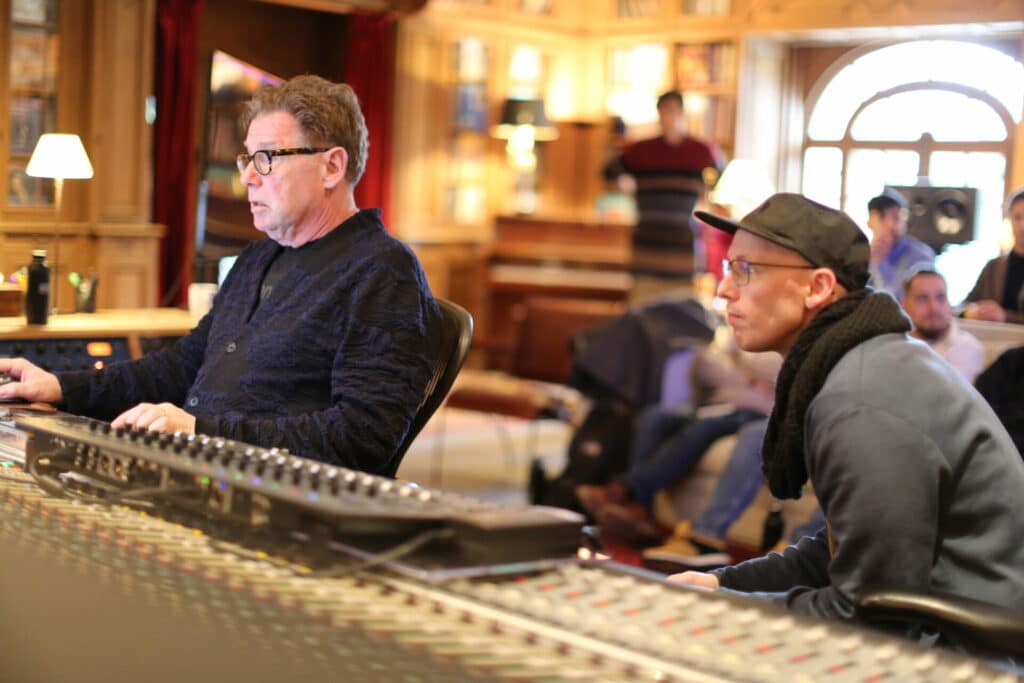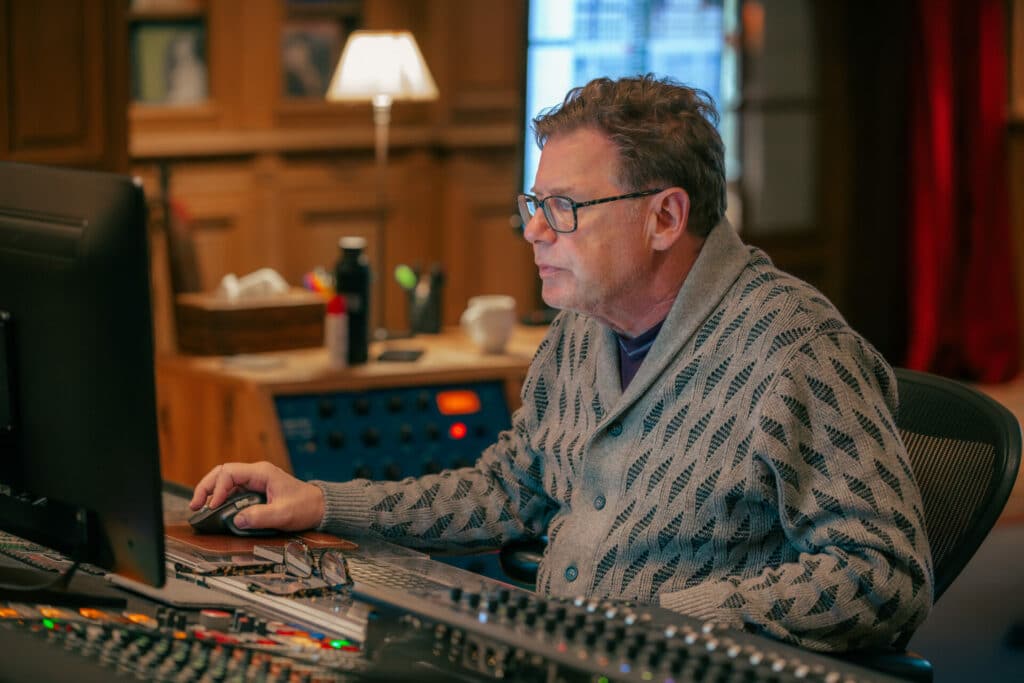What is it like to sit shoulder-to-shoulder with some of the world’s top score mixers, composers, and game audio specialists — all while getting direct feedback from the man who mixed Inception, Gladiator, and The Dark Knight?
We caught up with Alec Mackay, fresh from a week-long Mix with the Masters seminar hosted by legendary score mixer Alan Meyerson. Held at the iconic Studios La Fabrique, this immersive workshop offered an inside look at the creative and technical process behind cinematic mixing. From real-time mix critiques to game-changing workflow insights and late-night chats with fellow audio obsessives from across the globe, Alec shares his most valuable takeaways and how the experience is already elevating his work at our studios.
Tell us more about the Mix with the Masters seminar:
- The seminar was an opportunity to work directly with Alan on some of our own work, presenting music we have mixed to be critically reviewed and improved. We also revisited some previous score mixes of his to gain a deeper understanding of the creative and technical work that goes into recording orchestral music and mixing that music to picture.
What was your experience connecting with other score mixers from around the globe?
- Out of the 20 participants, about half were composers looking to improve their mixing skills and recording techniques – while the rest of us were a rag-tag bunch of score mixers, audio editors, game audio specialists, and music producers.
- I found that despite our geographic differences, we actually had a lot in common. I was very surprised to hear how many of us have worked with the same studios and orchestras. In my case I presented my own mix of some animation scores composed by Andries Smit and recorded by the Budapest Art Orchestra at East Connection Music Recording. Several other participants also showcased their pieces recorded with the same orchestra.
- I found it fascinating to hear how the industry differs between countries, particularly how the access to professional facilities, musicians, and other engineers in Europe and US can open up many more opportunities for composers and filmmakers alike.
- I connected with several people involved in game audio music and sound design, and I hope to further that relationship as we build our gaming profile.
- Most of all I was impressed with the sheer talent in the room, sitting next to some incredible composers and getting to discuss their approaches, techniques, and styles while hearing Alan’s take on their mixes.
What was your biggest ‘aha’ moment? Or something that shifted your perspective on mixing?
- One of the big moments for me related to workflow when starting out in a mix. I find it’s easy to dive in when there’s a lot to fix, but the challenge comes when everything already has a good balance and is well recorded – it’s hard to know where to start.
- Alan’s advice on this was to just listen through the mix to give yourself ideas. If the whole mix needs just a little more excitement, or perhaps the brass could be more powerful, those are good entry points into the mix. Once you’ve found your “in” it’s easier to get into the guts of it.




What did you learn that will forever change how you work?
- One of the more technical concepts I learned is how to play on the balance of low frequency transient material with more foundational low frequency sustain. For example, I may try to increase the sense of size in a mix by carefully shaping the envelope of low frequency transient material to be more impactful, using a combination of compression, transient shapers, and saturation. However, I learned that the sustain of lows can contribute even more to the “cinematic sound” I’m striving to achieve. I can’t always rely on those big punchy impacts, sometimes instead I need a big ballsy dramatic low end sustain to compliment it.
- One of the techniques Alan used to achieve this was a parallel distortion bus – something I’ve never tried. In this case we used a SansAmp distortion (a well known Tchad Blake technique) coupled with a Thermionic Culture Vulture in parallel to the Low Percussion bus, which let him blend the wet distorted signal back into the dry transient material. The result is a weightier sound with a fatter bottom (sic).
- This really stood out to me as the missing link between my mixes and the big cinematic mixes of orchestral scores like Gladiator and The Dark Knight.
If you could only apply one lesson from the workshop to your next project, what would it be?
- Don’t be afraid to play and experiment. There are some great ideas and sounds that can come from play, and often the unconventional ideas are what helps keep the mix interesting.
What value do you think going on this trip brings you at PCS?
- I feel that this experience has reinforced the trust that PCS has placed in my abilities as a music mixer. Instead of a just side gig, I’m now regularly mixing music that comes out of the film and trailer music departments. I’m able to more confidently make decisions without questioning if I’m doing the right thing – which saves me time and opens up a lot of room for creativity.
- One of the unexpected things to come from the workshop is that we’re all still in regular contact, and sharing what we do with each other. Each of us plugged into our local industry provides an insight into new techniques, technologies, and trends from around the world. Sometimes even Alan chimes in on the WhatsApp group.